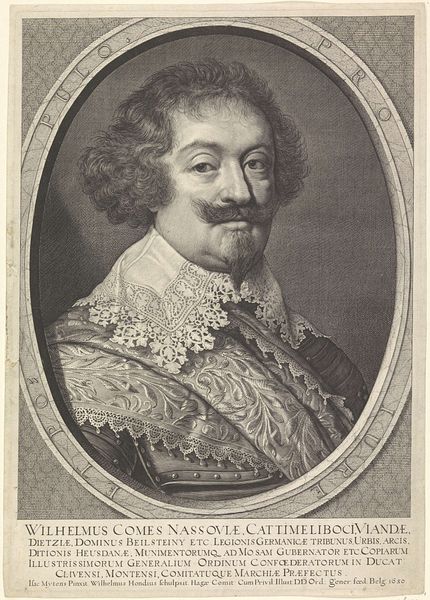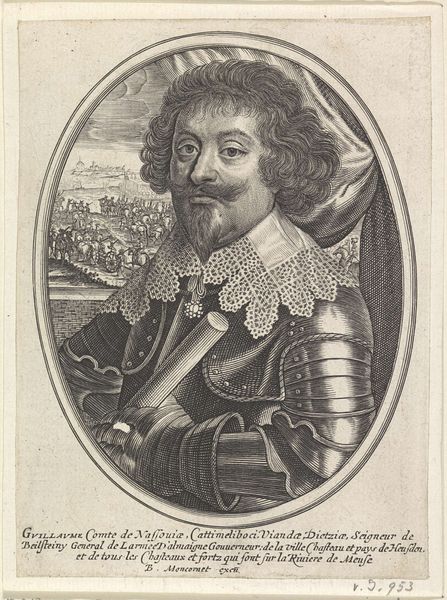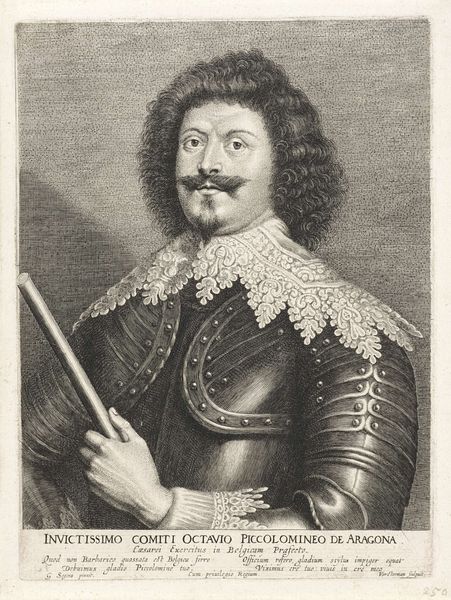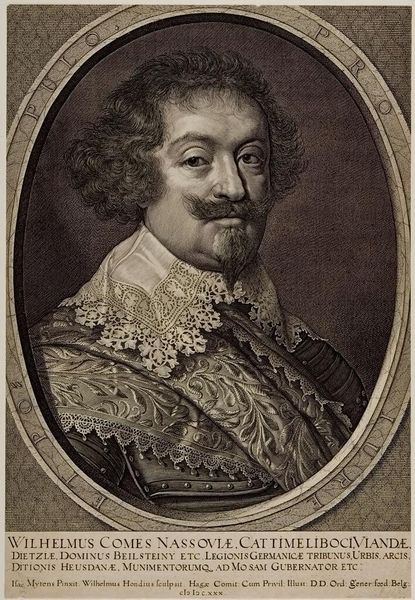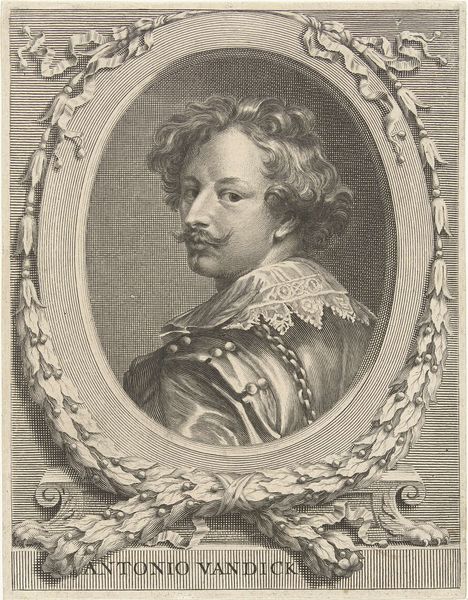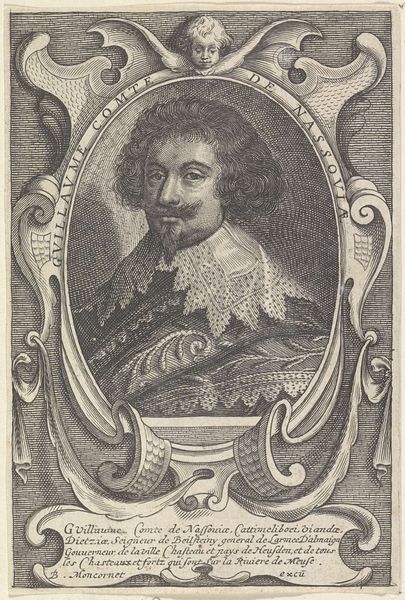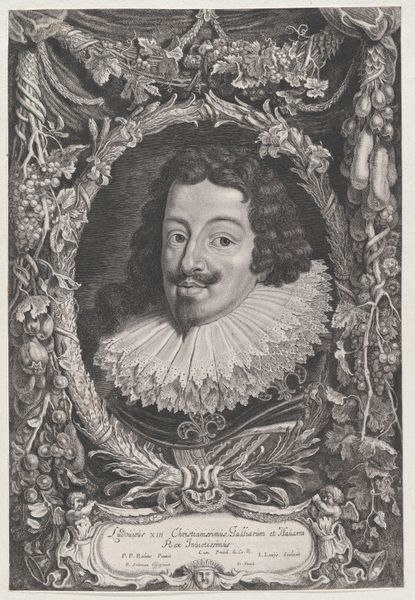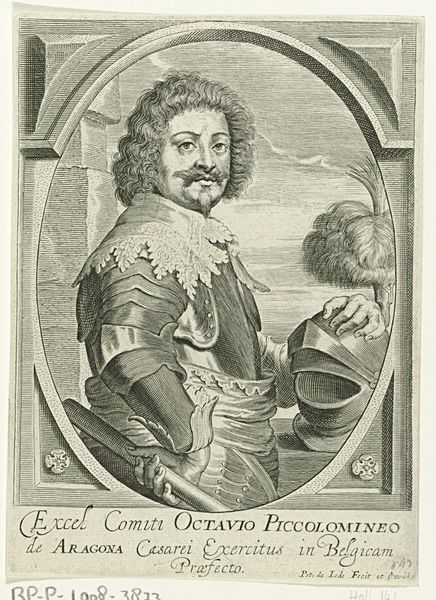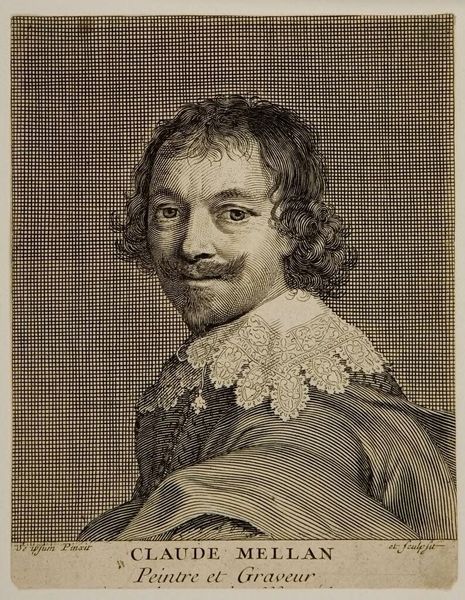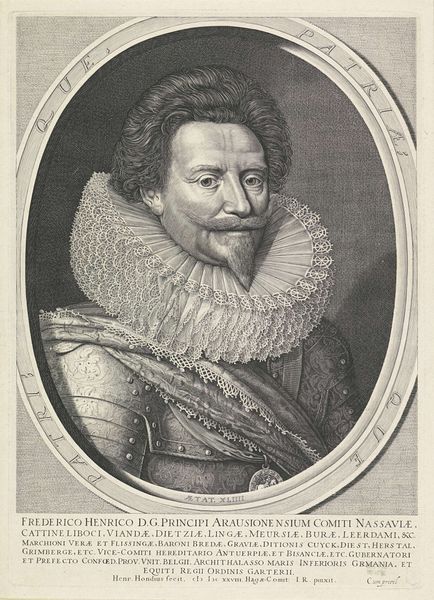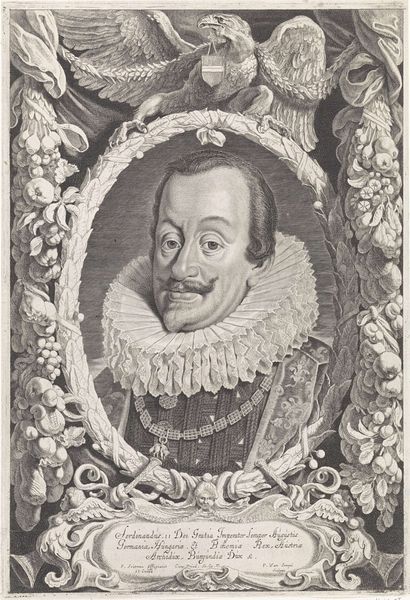
engraving
portrait
facial expression drawing
baroque
old engraving style
portrait drawing
history-painting
engraving
Dimensions: height 415 mm, width 303 mm
Copyright: Rijks Museum: Open Domain
Curator: This engraving, executed between 1644 and 1650 by Jonas Suyderhoef, presents a portrait of Ottavio Piccolomini. The style certainly reflects the Baroque period, showcasing meticulous detail, but the portrait itself strikes me as conveying something deeper. Editor: My initial impression is… constrained. Despite the finery, the detailed lace collar and glimmering armour, there’s an almost uncomfortable formality about the image. His expression doesn’t seem to quite match the lavish presentation. Curator: Yes, I see what you mean. Consider the armor – traditionally a symbol of martial strength and nobility, rendered here in painstaking detail through engraving. Its texture is meant to symbolize virtue. But his gaze feels a bit unsettling. The lack of direct engagement perhaps symbolizes detachment? Editor: Precisely. He is quite literally weighed down with signifiers of power – note the elaborate chain, perhaps denoting membership in a high order. But what does that signify when it sits so heavily? Is it pride, or obligation? Curator: In Baroque portraiture, such elements would typically affirm power and status. Suyderhoef was masterful at portraying textures and depth in his engravings. Perhaps he's also reflecting a tension in Piccolomini’s role – a leader amidst the tumult of the Thirty Years’ War? Editor: Exactly. Piccolomini was a controversial figure, and I read this tension as potentially intentional on the artist’s part, maybe to show a man burdened by political and military decisions. The formality suffocates rather than elevates. Curator: That’s an astute observation. I focused on the individual symbols without perhaps reading them as a unified expression of conflict and constraint. The contrast between the intricate details and his less than enthusiastic demeanor is very telling. Editor: Seeing it framed that way, and thinking of the social and historical pressures he lived under, makes the image resonate on another level entirely. Curator: I'll certainly view it differently now – considering how its iconography can be at odds with the subject’s expression. Editor: I’m glad to have offered a new perspective. Thank you.
Comments
No comments
Be the first to comment and join the conversation on the ultimate creative platform.
